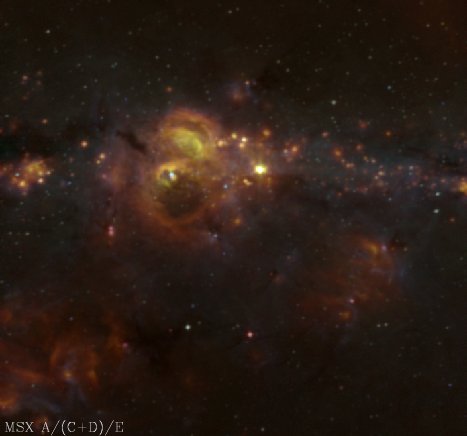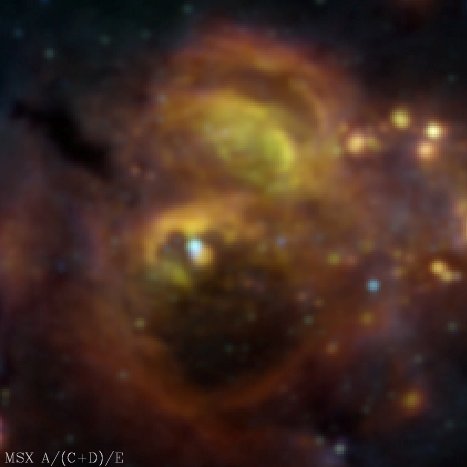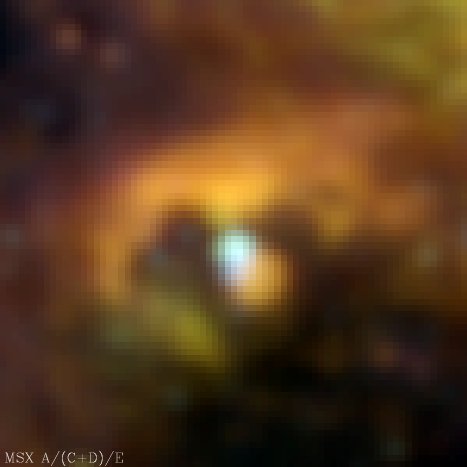DR. ANDREA MONETI
Ingénieur de RechercheInstitut d'Astrophysique, Paris
98bis Blvd Arago, F-75014 Paris, France
Tel: +33 (0)1 4432 8067 | Fax: +33 (0)1 4432 8001
email: moneti@iap.fr
Professional web page | Leisure web page

DR. ANDREA MONETIIngénieur de RechercheInstitut d'Astrophysique, Paris 98bis Blvd Arago, F-75014 Paris, France Tel: +33 (0)1 4432 8067 | Fax: +33 (0)1 4432 8001 email: moneti@iap.fr Professional web page | Leisure web page |
 |
|---|---|
It follows that my research interests are changing: moving (1) further to the infrared, namely 0.3 - 3 mm, the wavelength range in which the Planck satellite will observe, (2) further away in space, basically as far as one can go with light, that is to the Cosmic Microwave Background, or CMB, and (3) from the formation of stars to the formation of the universe! Curiously, this is bringing me back to cosmology, which is what pushed me towards astronomy (and astrophysics) in the first place, back in the mid 70's.
| The Pistol Nebula and Quintuplet Cluster in the Galactic Centre |
|---|

Full field - 8 deg wide |

The Arches and the bubble |

The Pistol region |
![]() Mid-infrared
imaging and spectroscopy of the enigmatic cocoon stars in the Quintuplet
Cluster
Mid-infrared
imaging and spectroscopy of the enigmatic cocoon stars in the Quintuplet
Cluster
A.Moneti, S.R.Stolovy, J.A.D.L.Blommaert, & D.F.Figer, A&A
366, 106 (2001)
pdf from A&A (522 kb) | astro-ph/0010558
This is the Galactic Centre reddening
law used in this paper (and a table
of the values.)
![]() Cold H2O
and CO ice and gas toward the Galactic Center
Cold H2O
and CO ice and gas toward the Galactic Center
A.Moneti, J. Cernicharo, & J.R. Pardo ApJLett, 549, 203 (2001)
pdf from ApJLett (105kb) - astro-ph/00120292
![]() [ArII], [NeII],
and [NeIII] forbidden line images of the
Pistol Nebula extracted from the ISOCAM-CVF datacube; a continuum
image is also shown for comparison. And also a composite,
with [ArII] in blue, [NeII] in green, and [NeIII] in red.
[ArII], [NeII],
and [NeIII] forbidden line images of the
Pistol Nebula extracted from the ISOCAM-CVF datacube; a continuum
image is also shown for comparison. And also a composite,
with [ArII] in blue, [NeII] in green, and [NeIII] in red.
![]() ISOCAM-CVF
datacube of the Pistol Star/Nebula
and of the
Quintuplet Cluster:
The
Pistol Star is the brightest source at short wavelengths. The
full
Pistol Nebula appears at about 8 um, just before the deep silicate
absorption. The top part of the Pistol Nebula can be seen also in the Quintuplet
datacube, which also shows the increasing size of the point-spread function
and the different temperatures of the Quintuplet sources. In all figures
North is to the top, and East is to the left.
ISOCAM-CVF
datacube of the Pistol Star/Nebula
and of the
Quintuplet Cluster:
The
Pistol Star is the brightest source at short wavelengths. The
full
Pistol Nebula appears at about 8 um, just before the deep silicate
absorption. The top part of the Pistol Nebula can be seen also in the Quintuplet
datacube, which also shows the increasing size of the point-spread function
and the different temperatures of the Quintuplet sources. In all figures
North is to the top, and East is to the left.
| Clusters and PMS stars |
|---|
![]() Truecolor
view made of the 30 Dorauds from WFPC2 V and R images (Hunter
et al. 1996), and H from NICMOS (thank you Mark
McCaughrean. For more details, see
Zinnecker
et al. (2000).
Truecolor
view made of the 30 Dorauds from WFPC2 V and R images (Hunter
et al. 1996), and H from NICMOS (thank you Mark
McCaughrean. For more details, see
Zinnecker
et al. (2000).
![]() Some views
of M16/NGC6611: ISOGAL view, composite
of a 7.7 and a 15 um images. The well known elephant trunks, pointing toward
the upper right, are near the centre of the image. A near
infrared view, made from J, H, and K images (curtesy of Mark McCaughrean),
and an MSX view, made from 8, 12+15, and 22
um images. In the latter, the orientation is Galactic, and the elephant
trunks are located slighlty below image center and point to the upper left.
Some views
of M16/NGC6611: ISOGAL view, composite
of a 7.7 and a 15 um images. The well known elephant trunks, pointing toward
the upper right, are near the centre of the image. A near
infrared view, made from J, H, and K images (curtesy of Mark McCaughrean),
and an MSX view, made from 8, 12+15, and 22
um images. In the latter, the orientation is Galactic, and the elephant
trunks are located slighlty below image center and point to the upper left.
![]() HH-30
IRS observed by ISOCAM... barely visible, but there!
HH-30
IRS observed by ISOCAM... barely visible, but there!